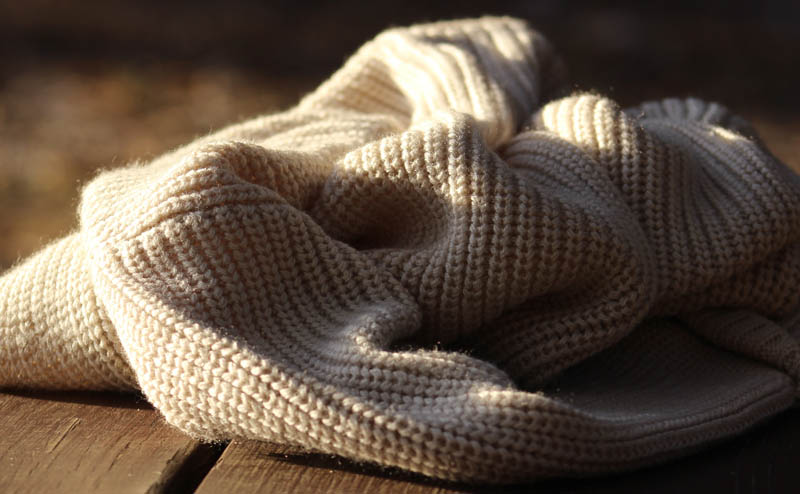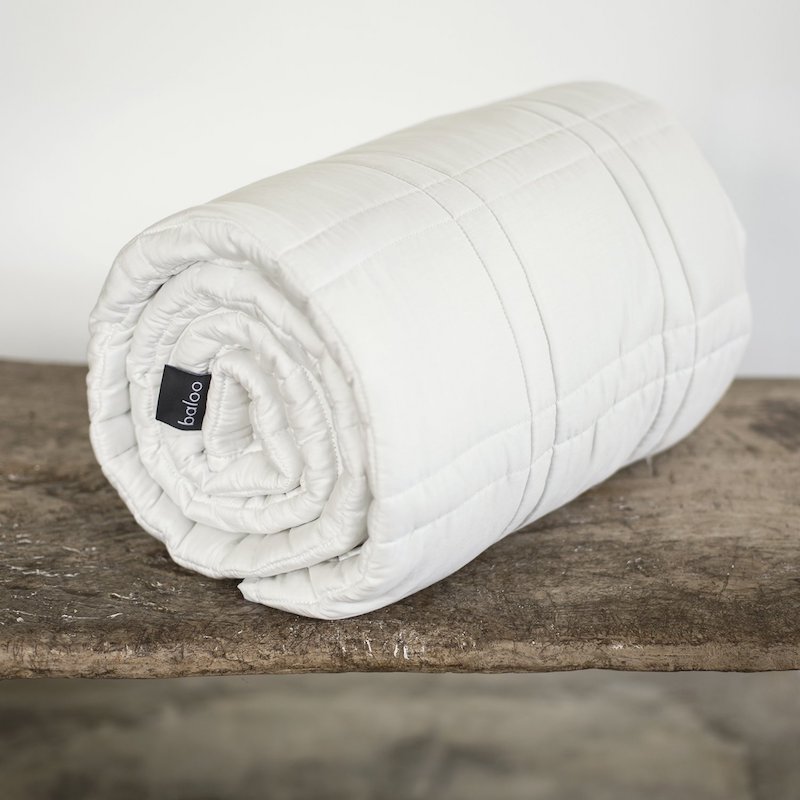Weighted blankets are increasing in popularity, and we can see why with how many benefits they provide. As well as the apparent warmth benefits, weighted blankets can also help to improve the quality of your sleep increase your blood circulation while stabilizing blood pressure, amongst other things.
Over the past few years, the demand for these blankets has gone through the roof, with some stockists struggling to keep up. Even famous celebrities take to social media and praise these blankets. Read our in-depth guide on and find out how to choose a weighted blanket!
How To Choose A Weighted Blanket?
Before we go deeper, let’s answer the first question first:
What Is a Weighted Blanket?
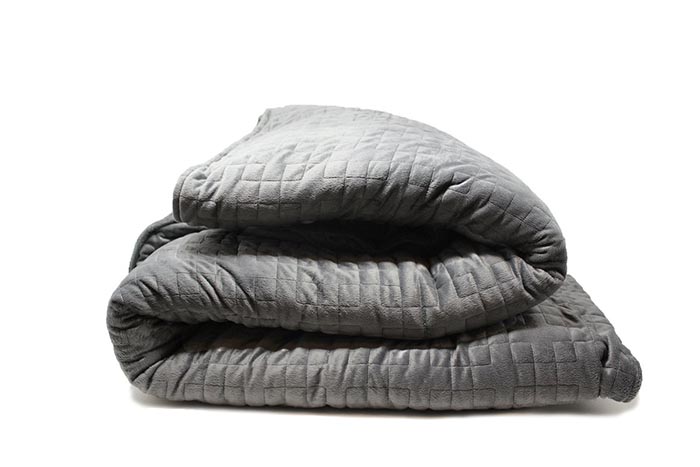
If you’ve been wondering what a weighted blanket is, you’ve come to the right place. Basically, they are precisely what they say on the tin – a blanket that contains weights. Even though the hype about them has just started, occupational therapists have been using them for years. This is because weighted blankets can help the management of sensory-related symptoms that adults and children on the autism spectrum experience.
Now that we’ve caught on to the excellent benefits of these blankets, they’ve become more popular than ever. While it may look like your standard quilt or throw, a weighted blanket is designed in a much different way. Each blanket contains a series of pockets that have each been individually filled with fillers like pellets or beads. The pockets are then sewn shut, resembling a patchwork quilt. In this way, the blanket can help distribute even pressure across the body.
So what does this weight actually do? Each pocket of weights can help stimulate the pressure points around your body. It’s this stimulation that results in a calmer nervous system. Because weighted blankets can have a calming effect, they are used to help with sensory-related and anxiety problems. The greater sense of calm can also help the body fall asleep faster, helping to treat conditions such as insomnia.
Sleep problems have been treated with weighted blankets for years. Lying under a weighted blanket helps to improve your sleep cycle and also produces more serotonin in the body. Serotonin is otherwise known as ‘the happy hormone’, which then goes on to produce melatonin, which promotes better and more restful sleep. The increase in melatonin from a weighted blanket can help ensure a better night’s sleep and will also play a part in restoring the natural circadian rhythm of your body.
How do we know that these blankets have helped with sleep and other health conditions? From the people that use them, of course! People who have slept using a weighted blanket reported that they felt more rested the next day.
Now you know all about the benefits of a weighted blanket and what they are, we may have encouraged you to go out and buy one for yourself. If this is the case, read on to find out the different things you need to consider before investing in a weighted blanket. Alternatively, head out to our best weighted blankets comparison and see if one of the 10 blankets we reviewed might fit the bill for you!
How Heavy Should Really A Weighted Blanket Be?
One of the most important questions about these blankets is what weight they should be. To choose the right weight, you will want to follow what is commonly referred to as the 10% rule.
The 10% Rule
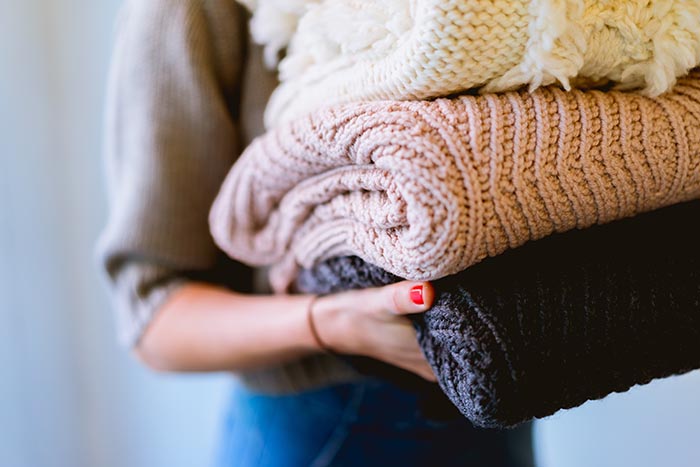
When choosing the right weight for your blanket, you want to aim for one that is around 10% of your current body weight. If you’re buying for a child, the recommendation is to find out 10% of their body weight and then add on one to two pounds for their blanket. This provides you with a great starting point to find the right blanket.
The whole point of a weighted blanket is to be comfortable and provide a better night’s sleep. If you are uncomfortable because the blanket is too heavy for your body, the item becomes completely counterproductive, and you may as well not have it at all.
Of course, a weighted blanket is going to be a little bit heavy, but not so much that it becomes unmanageable. You want it to apply the right amount of pressure around your body so that it hits those all-important pressure points.
Finding the ideal weight for a blanket can be tricky if you don’t know what you’re looking for. It’s best to work out 10% of your body weight and then go from there, adjusting the weight if needed to find the most comfortable option.
Most manufacturers will say to cap the weight at 10% of your overall body weight to be safe, but a lot of users say that adding on a bit extra can enhance the benefits.
Sharing a Blanket
Weighted blankets are intended to be used by one person. Sharing it may reduce its effectiveness for you or the person you are sharing it with. You can share if you want to, but only with those who are a similar size and weight to you. Sharing a blanket with a child, for example, would not be a good idea.
Weighted Blanket Chart
Just to make it a bit easier for you, below we have put together a list of different body weights and what kind of blanket weight you should be looking at for each one.
Your Body Weight | Ideal Blanket Weight |
|---|---|
| 20 – 40 lbs | Don't Use |
| 30 – 50 lbs | 5 lbs |
| 50 – 70 lbs | 5 -7 lbs |
| 70 – 90 lbs | 8 – 10 lbs |
| 90 – 110 lbs | 10 lbs |
| 110-120 lbs | 10 - 15 lbs |
| 120 – 130 lbs | 12 – 13 lbs |
| 130 -140 lbs | 13 - 14 lbs |
| 140 – 160 lbs | 15 lbs |
| 160 – 180 lbs | 15 - 20 lbs |
| 180 – 200 lbs | 20 lbs |
| 200 - 230 lbs | 20 - 25 lbs |
| 230+ lbs | 25 - 30 lbs |
Safety Precautions
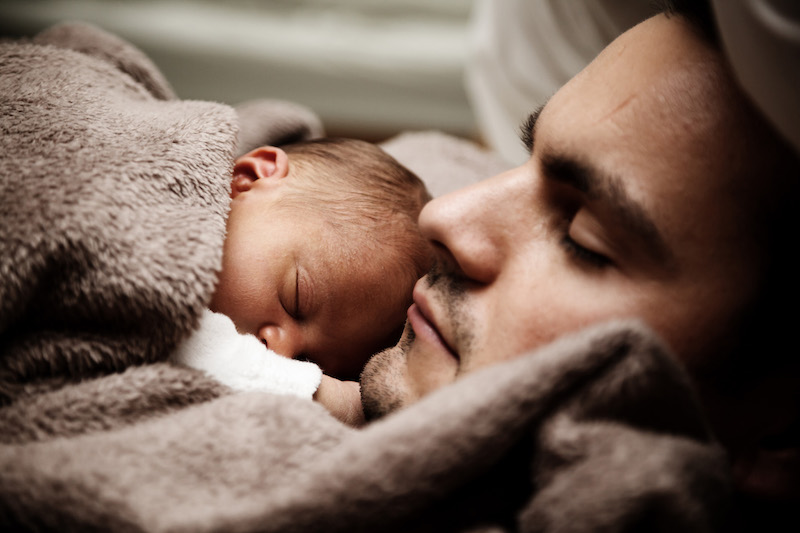
Safety is a big concern for everyone when they are sleeping, and because of the additional weight added on with these blankets, there are precautions you need to take. This is especially true for those with health problems or children.
Children who weightless than 20 lbs should not be using a weighted blanket at all. Also, if they are under two years old, they shouldn’t be using them either, even if they weigh over the 20 lbs limit. This is because children under two don’t have the right fine motor skills to adjust the blanket based on instinct. In this scenario, the child could overheat or even fail to pull the blanket off them if it’s impeding them breathing.
Another thing a child should never be using is an adult’s weighted blanket. They need to be able to pull it off themselves easily without needing help. If it’s too heavy for a child to move, they should not be sleeping under it. Special care has to be taken for children who have developmental delays or special needs. Weighted blankets are used for treating a variety of these problems. The safety of any child has to remain paramount at all times.
Adults have to be careful when using this type of blanket as well. Extra care should be taken by the elderly, making sure the blanket isn’t too heavy for them. Any weakness in the arms or legs should be taken into consideration when choosing a weighted blanket so the person that is using it can move it easily.
Choosing the Right Size
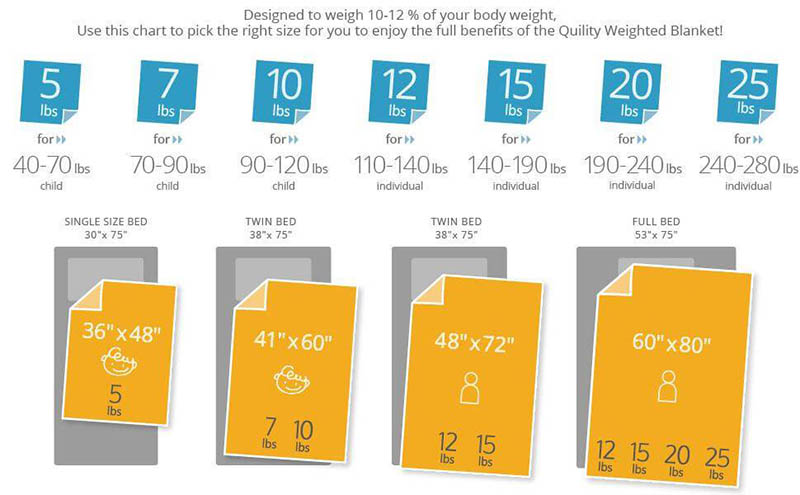
There are so many sizes and shapes of blankets. It’s hard to know where to start. The size should be customizable to your needs, the same as the weight is. You want to choose a blanket that easily covers the space between your chin to your feet.
A common instinct would be to shop for a blanket that fits the size of the bed you have. However, what you should be doing is matching the size of the blanket to the person who is using it. A weighted blanket has to be long enough so that it reaches from your chin to your feet. The width also should be comfortable enough for you to lie under as well.
If you are someone who prefers only to have their upper body covered, that’s fine. The blanket will still provide your pressure points with the stimulation you need to calm the nervous system down and help improve circulation, anxiety, and insomnia.
Don’t want the blanket to cover your upper body at all? That’s fine too. Draping a weighted blanket of your legs and lower body helps increase the circulation.
Another thing you will want to consider when choosing the size of your blanket is where you will be using it. If you are going to use it on your bed, then a larger blanket is fine. However, some people like to take these blankets when they travel or even to go camping. If this is the case, then you will need a smaller version, as they can be quite bulky and cumbersome to carry.
The general recommendations for blanket sizes have a range of 30 to 38 inches for kids and 36 to 40 inches for adults. You can check out the chart below to match your height with the length of the blanket you should choose.
Choosing the Right Thickness
Weighted blankets are, of course, stuffed with weights. This makes them thicker than a regular blanket or quilt. The fabric and weights that have been used to fill the blanket will also affect how thick it is.
There are so many different materials that these blankets can be filled with. Beads, pellets, poly-pellets, and rice are all part of that list. Whatever the weights are made out of, they should have been distributed evenly throughout the blanket so that it looks proportionate. It all depends on the fillers that have been used, but typically a weighted blanket is around one inch thick.
Proportions and Dimensions
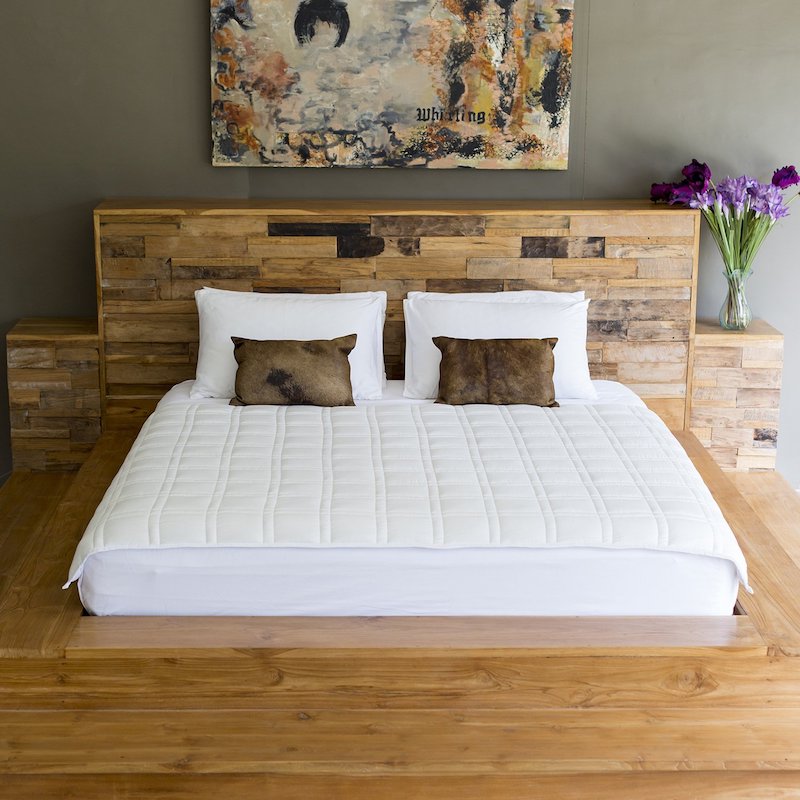
The dimensions and proportions you choose for your blanket all depend on your personal preference. Blankets all feel different for each person that uses them. You also have to think about how you like to sleep. If you are someone who doesn’t like their feet covered, you don’t need a long blanket.
A factor that determines the size of the blanket, as well as the thickness, is the squares. This includes what they are filled with and how they’ve been sewn together. A 10 lb blanket will be thicker if it measures 36″ than if it measured 40″ because the weight is packed over a smaller surface area. With the larger blankets, you may also want to increase the weight by a couple of pounds to make up for the size difference.
Choosing a Child’s Weighted Blanket

Choosing a blanket for a child still has the same 10% of their body weight rule applied to it. You want the blanket to fit the child and not the mattress they sleep on, as this may be too big for them to move. Remember that no child under two years of age should be using a weighted blanket.
Your child has to be comfortable sleeping under a weighted blanket. It shouldn’t be forced upon them because it will make them feel uncomfortable. Discomfort leads to anxiety, which is completely counterproductive to the benefits of a weighted blanket. Give them the time they need to get used to the blanket and never use it as a restraint. The whole process should be calming and soothing.
Bed Sized Weighted Blankets
Another thing you should also remember is that your weighted blanket needs to fit you, not your bed. There’s no point buying a blanket that is going to cover more of the mattress or bed frame than you. It’s not going to give you the same benefits as one that fits properly.
Every inch of a weighted blanket is used to benefit your body in many different ways. A larger blanket that has been bought to fit your sleeping surface won’t work as a therapeutic tool. It’s also a waste of money because weighted blankets cost more than your standard comforters and quilts. Forget the aesthetics of the blanket and use it properly.
So, if you have a queen or king-sized bed that you want a blanket for, don’t buy one that matches the size of the mattress. Instead, you should get your tape measure and see how tall you or the person who is going to be using it is instead. These are the dimensions you need to use to cover your body and get all of the therapeutic benefits of these wonderful blankets.
You will also need to use the 10% rule to see how heavy the blanket should be. Weigh yourself on your scales and calculate what 10% of that weight will be. This is the weight of your blanket.
Sharing a Weighted Blanket
If you really want to share a weighted blanket with someone, you need to make sure that your body weights aren’t too different from each other. Big variations in weight will mean that the blanket won’t benefit one of the people sleeping underneath it. If you do have a drastically different weight from the person you want to share with, the best advice is to not share at all and get your own blanket.
You also need to think about how the total weight of the blanket is going to be divided up between two people. If you purchased an 18 lb blanket to cut the price down and share it with someone else, you would need to make up for this by buying one that is double the width. This is so the 18 lbs could be shared out evenly on each of your bodies. But this also means each person is only getting 9 lbs of the blanket’s benefits, which is nowhere near what you originally wanted.
The cost of making a larger blanket may be higher than buying two individual blankets that fit you better. In this case, we would also suggest you have your own blanket to keep costs low and ensure that the weight can be evenly distributed on your body.
What Is the Biggest Size Weighted Blanket?
The biggest weighted blanket available to buy off the shelves without customization is a California king-size one. These measure 72″ wide by 84″ long. If you decide to purchase one of these mammoth blankets, remember that it won’t have all of the same benefits as a blanket that is made to fit you.
The size of your blanket is very much based on your personal preferences. You are also able to customize the weight of the blanket within a range of 15 to 30 lbs. A weighted blanket should never be too heavy to move around, especially when you are sleeping under it. A blanket that is made to weigh over the 30 lb limit may be too much for your body to handle and throws up a lot of safety issues.
If you’re set on an oversized weighted blanket, then use your common sense and take the necessary safety precautions we mentioned earlier. You want to be comfortable and cozy, and never struggle to move under the blanket.
What Fabric Is Best for a Weighted Blanket?
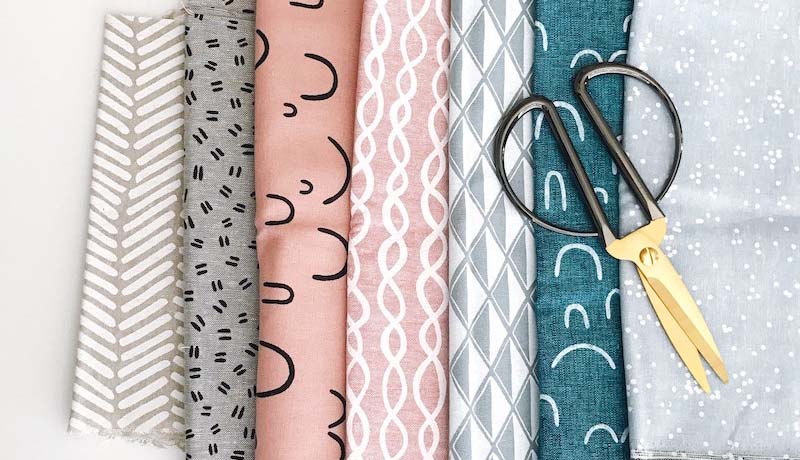
There’s so much choice when it comes to the fabric a weighted blanket is made from. A few examples of what’s fabrics are on offer include velvet, flannel, satin, fleece, polyester, and cotton. The fabric you choose will largely depend on what your personal preference is. There are some factors you can consider first before you make your final decision, which we’ve outlined below.
- Temperature – Different fabrics will provide different levels of heat. For someone who runs cold and likes to cuddle up under a big, heavy blanket, you will want to choose a fabric that holds onto the heat, such as fleece or flannel. If you’re someone who gets hot very easily, then opting for a lightweight fabric such as a cotton blend would definitely be a better choice.
- Different fabrics for different seasons – A great compromise to changing seasons is to have two blankets. You can purchase a warmer, flannel fabric blanket for winter and then swap to a breathable cotton one in the summer. Although this will end up costing you more, it could be a small price to pay to keep you comfortable all year round.
- Texture sensitivity – If you have a particular sensitivity to certain fabrics (which is common with sensory-related issues), then you should avoid these in your weighted blanket. Cotton or satin may be the best option in this situation, but it all depends on what you feel most comfortable with.
- Duvet covers – If you can’t find a weighted blanket in the fabric you want, why not add a duvet cover to it instead? You can get a cover that fits your blanket perfectly, and then you don’t have to compromise on the material it is made from, keeping you comfortable at all times.
Weighted Blanket Fillers
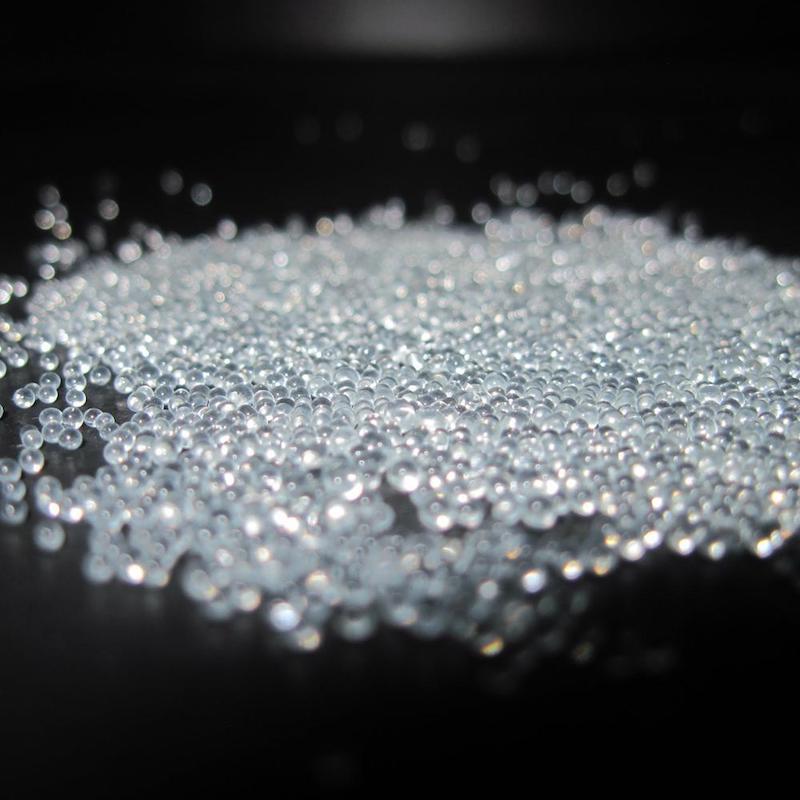
As well as choosing the right size, weight, and fabric, you will need to find the right filler as well. Each pocket in the blanket contains weights, which will not only determine how heavy it but how it feels as well. Common fillers you will come across in weighted blankets include glass beads, polyester pellets, and sand.
- Poly-pellets – A polyester pellet or poly-pellets is a plastic blended material that hasn’t been exposed to any kind of toxins and chemicals. They do well as a filler, although some people find them a bit noisy.
- Glass beads – A higher-quality filler option are glass beads. They resemble small crystals of salt and are used in the more expensive weighted blankets.
- Sand – Sand is a more affordable option when it comes to blanket fillers. However, if you do choose sand, you have to remember that it won’t wash well. When you add water, it will swell up and can make the blanket go lumpy, which then affects the feel and look of the blanket.
- Rice – For those who want to make their own weighted blanket to save on money, then rice can be a great option. You have to remember that any organic filler you use, such as beans, pasta, and rice, will not wash well. For a blanket that is going to be used a lot, you’d be much better off paying for poly-pellets or glass bead fillers.
There are both inorganic and organic fillers on offer for your weighted blanket. An organic filler absorbs and conducts heat a lot better than the inorganic ones so that it will be better for the colder months. Inorganic fillers are cooler, so they can be used during the summer as a more breathable blanket.
How Much Will a Weighted Blanket Cost?
When you go to buy your weighted blanket, you may be surprised by the cost. They will not be the same as a normal blanket or quilt. You should think of it as more of an investment because of how many benefits they provide. Having a better quality of sleep and increased blood circulation will outweigh the money you spend on the blanket.
Think of it this way. The cost of will be significantly cheaper than a trip to the doctors or the therapists. The long term benefits these blankets can have on issues such as insomnia, anxiety, and depression will save you money in the long run despite the initial cost.
The average price of a weighted blanket will be around $100, with the higher quality ones being more than $200. It is classed as a big-ticket item, so you may want to consider your budget and what price you need to stick to before jumping in and buying one. This is why we made this guide – so you can make the best decision possible for the amount of money you are going to spend.
The price will also vary depending on what fillers and fabric you choose. Organic fillers can be more expensive than the inexpensive ones. Having a bigger blanket will also cost you more because there’s more material needed to make them. Smaller blankets will always run cheaper than the bigger ones.
If you think that a weighted blanket is a little out of your price range for the benefits it provides, why not try one out instead? Some manufacturers can offer you a trial period or even a money-back guarantee within 30 days of purchase.
A weighted blanket can be used for medical reasons, in which case your insurance may cover the cost of it, even if it’s just a small portion of it. Talk to your doctor or physician about prescribing one if you suffer from circulation issues, anxiety, or even Restless Leg Syndrome. Because they are being used for medical reasons, in this case, a weighted blanket can be considered tax-deductible too.
Finding Your Blanket
Now that you know that a big chunk of change will need to be spent on a weighted blanket, you want to make that investment wisely. Doing your research first and exploring all of the options available to you will ensure that the blanket is worth its weight in gold.
Size, filler, and fabric all determine the quality of your blanket. Start by researching each of these first and get an estimate for how much a blanket will cost you. Think about what you are going to be using the blanket for and do some research around the best types of blankets for those specific needs.
Another thing you will want to look at is reputable manufacturers of these blankets. A cheaper retailer may seem like a great idea to watch the pennies, but the blanket itself won’t be of high quality so that it won’t give you the same amount of benefits. Research some of the best manufacturers both online and instore, check out their reviews, and see what feedback recent customers have given their products.
You always want to opt for a manufacturer that offers you a 14-day money-back guarantee at the least. Thirty days would be better. Having this window of time allows you to assess the quality of the weighted blanket so that you get the best results for the amount of money you are spending.
It’s easy to find a weighted blanket both in brick-and-mortar stores as well as online. Amazon, Walmart, and Target are some of the most popular stockists, and you can view their full range online as well as check out reviews for the products too. Feedback like this is invaluable for your research, especially when you are going to be paying a significant amount of money for a blanket.
If you are looking for a blanket that is customized to your specific needs, sites like Etsy have people that will do that for you. Just keep in mind that as fun as personalizing your blanket is, it will end up costing you more. They take longer to make as well, so if you want one right away, then stick to your conventional buying options.
Weighted blankets are in huge demand at the moment, so many stores have them on backorder, meaning you may have to wait to get your product. Shopping in-store means you can walk away with your blanket that day, but it’s still important to do some online research before taking the plunge. The problem with stores is that there’s no one on hand to give you their opinion on the item like there is online, nor to give you knowledge on how it works.
Luckily for us in our modern world, we can find a review for pretty much anything we want to. Before you spend any money on a weighted blanket, do your research online and ask other users what their experience has been first.
Weighted Blanket Covers
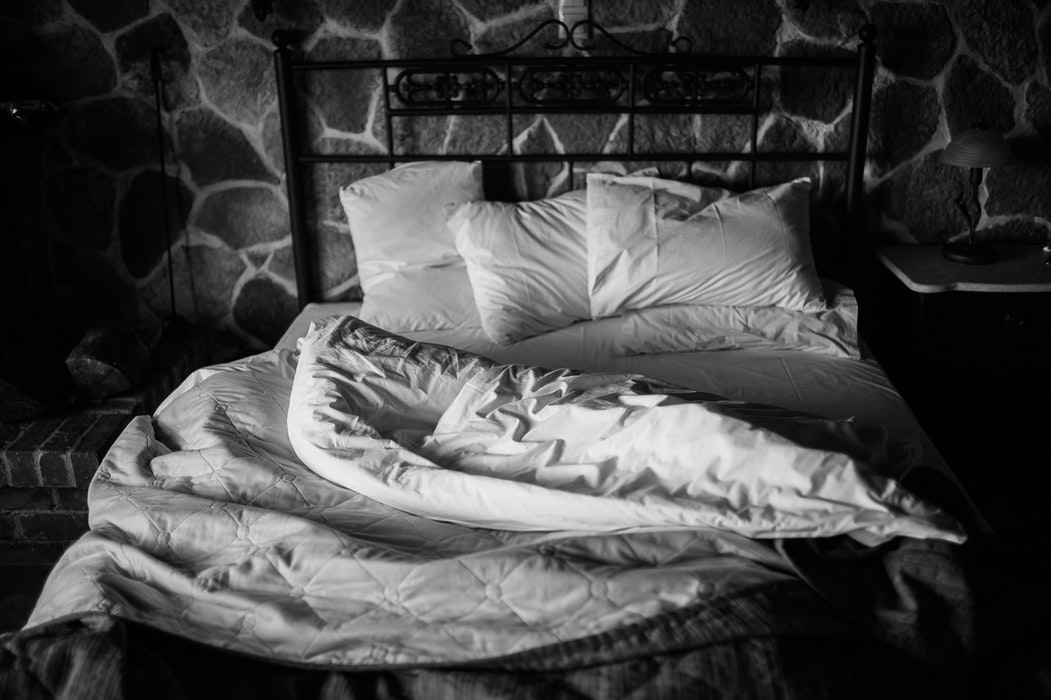
If you choose a high-quality fabric for your weighted blanket, then a cover may not be needed at all. However, if you are going to be using the blanket regularly, then a cover could make it easier to clean. Weighted blankets are costly, so having a cover that doesn’t cost as much could help you maintain the blanket properly.
Good quality covers should be purchased for your blanket because they won’t wear out as quickly. If you pay out more money for a better cover, you won’t have to spend more money further down the road. Consider your budget and make the right decision based on that.
If you are considering buying a blanket for a child, then a waterproof cover may be a good option. The ability to have a wipe-clean blanket can save on washing larger blankets or ones that are filled with materials that don’t fare well in the washing machine. Covers won’t hinder the benefits of a weighted blanket, either.
Buying a Cover For Your Weighted Blanket
There are some factors you will want to keep in mind when choosing your cover for a weighted blanket.
- Skin sensitivities – If you have a sensitivity to a certain fabric or don’t like to be too hot/too cold, then you will need to consider your choice of cover very carefully.
- Bundle deals – Some suppliers will give you a deal if you buy more than one cover at a time, saving you some money.
- Quality – Different manufacturers produce different quality products, so a cheaper cover may not be the best choice if you want something durable and long-lasting.
Cleaning and Maintenance

Maintaining and cleaning your weighted blanket will all depend on the different fabrics and materials used to make it. Some materials and fillers are easy to wash in the washing machine or can be wiped down with a cloth.
The first thing you need to think about when trying to clean a blanket like this is its weight. If it weighs less than 5 lbs, you can pop it in the washing machine on a cool cycle. Anything over that and you will have to hand wash it or take it to a dry cleaner to have a deep clean.
Washing a weighted blanket too often may mean that the weights used to fill the pockets deteriorate at a much faster weight. We would never recommend you wash these blankets every week. For larger blankets that aren’t used daily, washing them four times a year by hand and air drying them outside is more than enough. If you are using them daily, try to wash them once every other month and make sure you are doing it as gently as possible to maintain the quality of the blanket.
Weighted Blanket FAQs
How heavy should the blanket be?
Your weighted blanket should be around 10% of your body weight. It will also be down to your personal preference for how heavy you want it to be. There are guidelines in place for anyone that wants a blanket for their child or occupational therapy reasons. Safety precautions should always be taken when choosing the weight of a blanket. You need to be able to move around easily underneath the blanket and remove it with ease.
How do you clean your weighted blanket?
Weighted blankets are safe to put in your washer and dryer. They should be washed separately on a cool water cycle and tumble dried on a low heat to prevent shrinkage. For larger blankets, you will need to hand wash them and then air dry them outside. Remember that washing your blanket too often can result in the filling being damaged, which will go on to affect the therapeutic qualities of the product. Try to only wash it as needed, and if you know, it will be used a lot then invest in a cover.
What is a weighted blanket?
A weighted blanket is exactly what it says on the tin. They are a blanket that has weights added to it. The blanket has many weights distributed evenly across the body that stimulates the pressure points, helping to calm the nervous system down and enhancing the quality of your sleep.
How do I choose the right size blanket?
There are a lot of different sized blankets available. Just like choosing the weight, make sure you buy a blanket that suits your needs. It should fit the length of your body from your chin to your feet.
How thick are weighted blankets?
A weighted blanket is thicker than your traditional throw because of the weight pockets. It will all depend on the type of fabric you choose as well as the filler material on how thick your blanket will be. Typically they measure around one inch thick.
What fabric should I choose for a weighted blanket?
Once again, this all depends on your personal preference. You can buy weighted blankets made from fleece, flannel, polyester, cotton, velvet, and even satin.
How much should I spend on a weighted blanket?
Weighted blankets are going to be much more expensive than your standard blanket or quilt. However, you are investing in the benefits that come along with weighted blankets, so spending a bit more cash is definitely worth it. If you are going to be using your blanket regularly we would recommend investing more money into it.
Final Words
I really hoped this page helped you in your quest on finding out how to choose a weighted blanket. Having one can provide you with so many health benefits, especially if you have trouble sleeping. Because of their popularity, there are so many options to choose from. You can customize the blanket to suit your needs. Remember to take into consideration what you want the blanket for when thinking about materials, weight, and cost. Use the guide above to make a good investment in a weighted blanket and start seeing results straight away.

